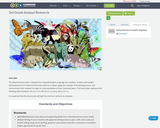
lesson plan for a student research project on animals
- Subject:
- English Language Arts
- Material Type:
- Activity/Lab
- Homework/Assignment
- Author:
- Isaac Simpson
- Date Added:
- 08/07/2020

lesson plan for a student research project on animals

Learn about the structure and function of living organisms by drawing an imaginary animal in the Take the Stage game show, ANIMAL SURVIVAL! Viewers become contestants on a game show and are challenged to draw an imaginary animal that could live and survive in either the desert, ocean, or the arctic tundra. When drawing the imaginary animal, the contestants write out two distinct structures and a function for each of the structures that help it survive. Learning Objective: Compare the structures and functions of different species that help them live and survive in a specific environment.

This series of activities explores animal behavior and how to research it. A scientist working in the Sound Ecology lab at Western Michigan University is featured. The introduction and first two activities are adaptable for all grade bands; the wrap-up section has 4 different options, depending on grade band.

Meet savvy scientist and inventor Hedy Lamarr, also known for her career as a glamorous international movie star. Dubbed "The Most Beautiful Woman in the World," Hedy actually preferred spending time creating inventions in her workshop to strutting down the red carpet. Hedy co-invented the technology known as frequency hopping, which turned out to be one of the most important scientific breakthroughs of the twentieth century! Today's cell phone, computers, and other electronic devices would be more vulnerable to hacking without the groundbreaking system discovered by a world-famous actress and gifted inventor. The resource includes a lesson plan/book card, a design challenge, and copy of a design thinking journal that provide guidance on using the book to inspire students' curiosity for design thinking. Maker Challenge: Create small groups. Pass out one of the challenges listed in the lesson plan/book card to each group for them to come up with an invention that will solve the problem at hand.
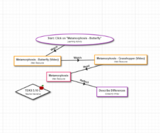
In this Roadmap, students will learn about two types of metamorphosis - complete and incomplete.

A young girl has a wonderful idea to make the most MAGNIFICENT thing! But making her magnificent thing is anything but easy, and the girl repeatedly tries and fails. Eventually, she quits, but a walk with her dog and time to think, she comes back to her project with renewed enthusiasm and manages to get it just right. The resource includes a lesson plan/book card, a design challenge, and copy of a design thinking journal that provide guidance on using the book to inspire students' curiosity for design thinking. Maker Challenge: Create small groups. Pass out one of the challenges listed in the lesson plan/book card to each group for them to come up with an invention that will solve the problem at hand.
A document is included in the resources folder that lists the complete standards-alignment for this book activity.
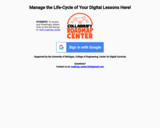
The No Place Like Home unit focuses on the following fundamental ideas: 1) plants and animals have unique and diverse life cycles; 2) in addition to being inherited from parents, many characteristics of organisms result from interactions with the environment; 3) and sometimes differences in characteristics between individuals of the same species provide survival advantages. There are three learning cycles in this unit. In the first cycle, students create and use explanatory models to explain the life stages and reproductive cycles of different types of organisms. In Cycle 2, students investigate how the traits of the same type of plants and animals grown from different parents and under different environmental conditions might vary. Students apply what they have figured out to a plan for growing a plant with specific traits. In Cycle 3, students investigate how trait variation within a population impacts the survival of the individuals and the population as a whole. They use the explanatory reproductive cycle models developed in Cycle 1 to support predictions of how trait variation might impact the ability of an organism to survive, find a mate, and reproduce.

Resource used and updated by the Utah Board of Education for 3rd grade integrated science.
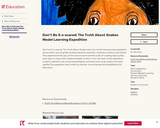
Don’t be S-s-scared: The Truth About Snakes was a six-month long learning expedition, during which second grade students became scientists, musicians, authors, and artists. They experienced the joys of the natural world and the pride of creating high-quality work about a topic that mattered deeply to them. From the start of the expedition, students aspired to be young herpetologists, scientists who study snakes and other reptiles.The expedition was written by teacher Jenna Gampel and published by EL Education.
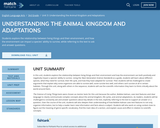
In this unit, students explore the relationship between living things and their environment and how the environment can both positively and negatively impact a species’ ability to survive. Using the Next Generation Science Standards as a guide, students will learn about different species, what they need for survival, their life cycle, and how they have adapted for survival. Then students will be challenged to create arguments that explain why some organisms are able to survive well, some survive less well, and others can’t survive at all in certain habitats. Through this unit, along with others in the sequence, students will use the scientific information they learn to think critically about the world around them.
The Science of Living Things texts were chosen as mentor texts for this unit because the author, Bobbie Kalman, uses text features and clear language to clearly communicate complex concepts about the animal kingdom, life cycles, and animal adaptations. As readers, students will be challenged to constantly ask and answer questions about key details in the text, explicitly referring to the text to support an answer or a question. Over the course of the unit, students will also deepen their understanding of how Bobbie Kalman uses text features to not only organize information, but to help a reader learn new information and facts about a subject. Students will also work on using context clues to figure out the meaning of genre-specific vocabulary, find the main idea of a section, and explain cause and effect in relation to scientific concepts.

Area: Plants and Animals
This Third Grade unit is the THIRD in the curriculum of four (4) units developed to address the Third Grade science standards of the Michigan Science Standards related to Plants and Animals.
You have just read the general description for this Phenomenal Science Unit. Before you continue your review, it would be very valuable to our field testing process for the 21 Units of Phenomenal Science for us to gather information about those educators who are reviewing each of the Units. Thank you. Please start your review with this BRIEF SURVEY. Enjoy your review.
**Based on the Michigan Science Standards, this unit allows for local, regional, or Michigan specific contexts or examples in teaching and assessment.
Therefore, as we think about how to address the performance task and this overall unit, links to the following information are very intentional (though are not intended to be limiting). Many plants and animals are specific to Michigan's environment which is quite diverse. Even within freshwater environments there is great diversity - wetlands including bogs and swamps, rivers and creeks with either fast or slow moving water, ponds or lakes - with great variation in size, depth and average temperatures. Along with the diversity of water environments and habitats we find tremendous variety of living organisms - large and small, common and uncommon. Michigan (and surrounding states, as well as Canada) is also very diverse in landforms, nutrients and topography which provides variation in habitats and ecosystems.
Organisms interact with the environment and their habitat in a systemic way. How well each plant or animal survives in its habitat is very dependent upon the traits passed on to each organism from their parents. Traits help certain plants and animals survive well, survive less well or not survive at all within various habitats.
Conditions within habitats are constantly changing. Sometimes change within a habitat is significant enough that some organisms (plants and animals) can no longer survive because the habitat no longer meets the needs of the plant or animal. Sometimes the change in habitat results in a new type of habitat which better suits of plants and animals that have different traits than the organisms which once lived in a geographic area.. Michigan fossils indicate and provide evidence that the habitats found today which meet the needs of many plants and animals surviving well here, are very different from what used to live here long ago.

Area: Adaptations
This Third Grade unit is the FOURTH in the curriculum of four (4) units developed to address the Third Grade science standards of the Michigan Science Standards related to Adaptations.
You have just read the general description for this Phenomenal Science Unit. Before you continue your review, it would be very valuable to our field testing process for the 21 Units of Phenomenal Science for us to gather information about those educators who are reviewing each of the Units. Thank you. Please start your review with this BRIEF SURVEY. Enjoy your review.
Plant and animal traits and their variations may be influenced by the environment or genetic factors. Organisms have characteristics that can be similar or different. Some animals may survive longer because they live in groups helping them to find food, defend themselves and adjust to change. Young animals are very much like their parents and also resemble other animals of the same kind. Plants also are very much like their parents and resemble other plants of the same kind. Many characteristics of organisms are inherited from their parents and some characteristics result from individuals' interactions with the environment, which can range from diet to learning. Variations in characteristics among individuals of the same species may provide advantages in surviving, finding mates, and reproducing. External environmental factors can also influence and modify individual's specific development, appearance, behavior, and likelihood of producing offspring. Differences in where they live or in the food they consume may cause organisms that are related to end up looking or behaving differently. Some animals participate and form groups which helps members of the group to survive by being able to protect themselves, obtain food and/or cope with change. Some kinds of animals do not typically participate in groups.
Some organisms survive well, less well, or cannot survive at all in a particular habitat. Therefore, when an environment changes in ways which cause significant temperature changes, physical differences or availability of necessary resources to meet the needs of the plants or animals, some will adapt, some will move to new locations, and some will die. In addition, some organisms may move into an environment when changes in the environment have taken place which meet the needs of an organism which has otherwise survived elsewhere.

The teacher leads a discussion in which students identify the physical needs of animals, and then speculate on the needs of plants. With guidance from the teacher, the students then help design an experiment that can take place in the classroom to test whether or not plants need light and water in order to grow. Sunflower seeds are planted in plastic cups, and once germinated, are exposed to different conditions. In particular, within the classroom setting it is easy to test for the effects of light versus darkness, and watered versus non-watered conditions. During exposure of the plants to these different conditions, students measure growth of the seedlings every few days using non-standard measurement. After a few weeks, they compare the growth of plants exposed to the different conditions, and make pictorial bar graphs that demonstrate these comparisons.